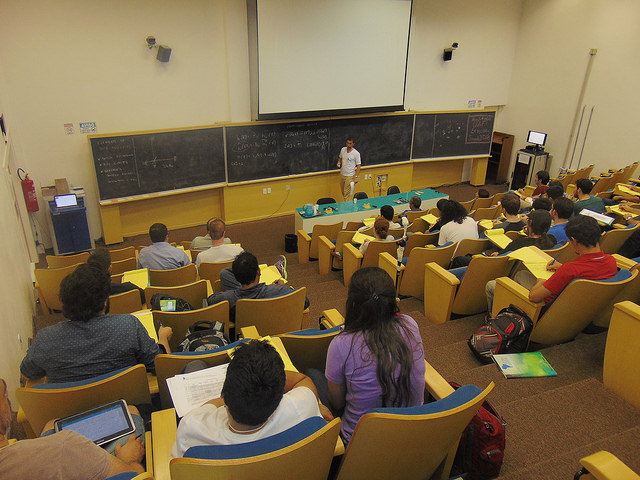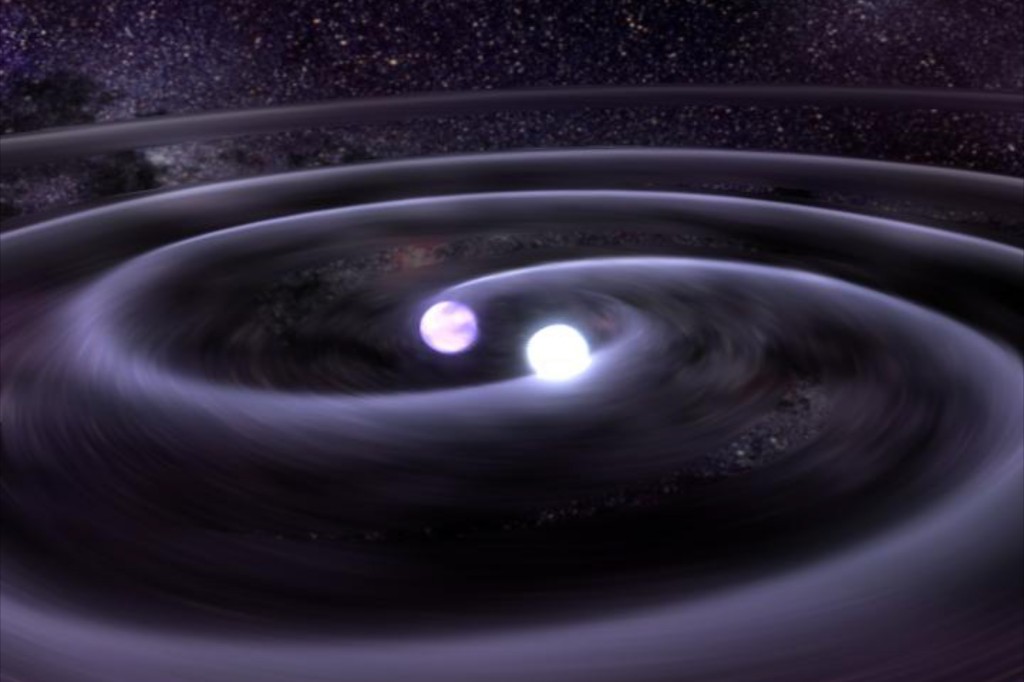ICTP-SAIFR organizes School on Gravitational Waves
In September, the LIGO (Laser Interferometer Gravitational – Wave Observatory) project will begin its experiments to detect, for the first time in a direct way, gravitational waves. Member of this international collaboration, ICTP-SAIFR researcher Riccardo Sturani was one of the organizers of the School on Gravitational Waves, held at the institute between the 3rd and 11th of August. During the event, students from several countries of South America watched lectures on this recent area of physics, that should gain more prominence in the upcoming years with the start of the LIGO activities.
“As these waves have not yet been detected directly, we have little data and few people who work with it in South America”, says Sturani. “The aim of the School was to promote the area. Through lectures, exercises and discussions, we addressed both theoretical and practical aspects, such as data analysis techniques”.
The School brought together several renowned international researchers of the area here http://samedayessays.org/essay-writer/, such as Alessandra Buonanno (Max Planck Institute, Potsdam, Germany), Stefano Foffa (University of Geneva, Italy), Sergej Klimenko (University of Florida, USA), Enrico Ramirez -Ruiz (University California-Santa Cruz, USA) and Walter Del Pozzo (University of Birmingham, UK).
Gravitational waves
All bodies that have mass generate gravitational waves when they move. These waves propagate through essay writing services space as a wave propagates in water, but are extremely weak. Only systems with large amounts of matter, such as ones consisting of black holes, for instance, can produce measurable gravitational waves. So far, its existence was confirmed only indirectly by measuring the energy emitted in the form of waves.
In a simplified way, LIGO’s idea to detect them directly is based on a system of lasers and mirrors. When passing through the system, a wave will change the amount of time a laser takes to get to a mirror, reflect and go back to a detector. Data analysis techniques for this type of experiment for buy essays online, as Sturani explains, need to be specific.
“Unlike many other areas of physics, our experiments have more noise than real signals”, says the researcher. “In my lectures, I talked about methods that can be used in such situations”.
The direct detection of gravitational waves would allow, for example, the study of astronomical bodies that don’t emit light, but emit these waves. “Our expectations is that gravitational waves will be detected by LIGO in the next two or three years”, says Sturani.


